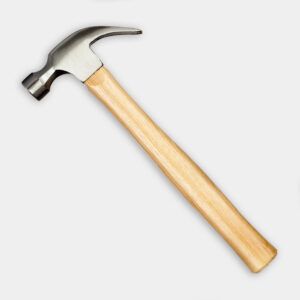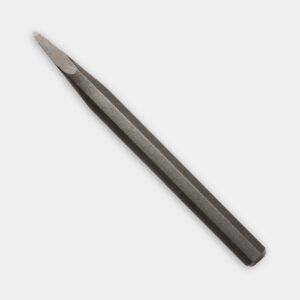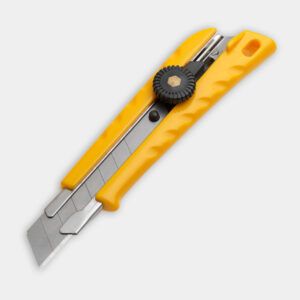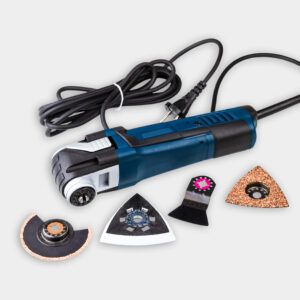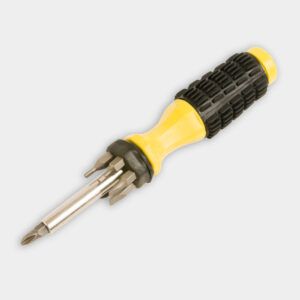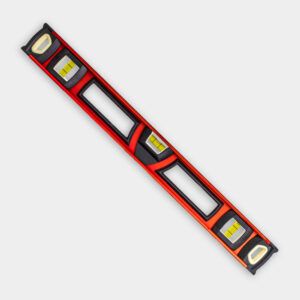Project details
Skill
Cost
Estimated Time
We may be compensated if you purchase through links on our website. Our team is committed to delivering honest, objective, and independent reviews on home products and services.
Note: Cost will vary depending on the hardware necessary and its availability.
Pocket doors have been around since the 1850s. Initially, they rolled on tracks on the floor, but by the 1880s, overhead tracks became the norm. Today, many homeowners are rediscovering their benefits: they save space compared to traditional swinging doors and add unique historic charm.
Though salvaging an antique pocket door is a moderately challenging project, it’s achievable with the right know-how. In the video above, This Old House carpenter Nathan Gilbert and his father, Bill, demonstrate how to install a salvaged antique pocket door.
Required Materials and Tools for a Pocket Door
Preparing for Pocket Door Installation
Before starting the installation process, make sure you have all the necessary components, and that the door will fit properly in the existing opening.
Source Hardware
Finding the right hardware for an antique pocket door can be challenging. Depending on what you have, this may include rollers, tracks, and locksets. Options for sourcing these include the following:
- Custom reproduction services
- Local salvage yards
- Online marketplaces specializing in antique hardware
- Specialty restoration shops
Gilbert mentions sourcing the exact Richards Parlor Door Hangers from 1881, noting the importance of finding period-appropriate hardware.
Measure and Fit
Inspect the door entry to make sure there’s room for the new door. Proper pocket door openings have what are known as “demi pockets” behind the latch-side jamb. This pocket allows the user to maneuver the door into place easily. Key steps include the following:
- Measuring the door opening width and height
- Checking the pocket depth
- Verifying the door’s dimensions
- Checking for enough clearance for hardware
Pocket Door Installation Process
Installing an antique pocket door requires patience, precision, and the right tools. Here’s a step-by-step guide to the process:
Remove Existing Trim
- Drive the finish nails holding the jamb through the wood with a nailset and hammer.
- Score the paint around the trim seams with a utility knife.
- Remove the jamb or trim pieces. This could consist of two or three pieces. If they’re in good shape, put them aside to reinstall later.
- Remove any damaged door plates or hardware.
Prepare the Opening
Inspect the pocket for any obstructions or damage. Clean the track and check that it’s level and secure. Check for the presence of a demi-pocket behind the latch-side jamb to make sure there’s enough space for the door to slide correctly.
Install New Hardware
- Remove the door plate from the roller assemblies.
- Install the rollers in the tracks.
- Cut a piece of sill seal to fit underneath the door plates.
- Mount the door plates on the top of the door.
Hang the Door
- Carefully maneuver the door into an upright position near the opening, using two people to help.
- Tilt the top of the door into the opening.
- Align the rollers with the door plates and latch them together.
- Use shims if necessary to position the door correctly.
Adjust and Level
- Place a level on the edge of the door.
- Use the adjustment screws on the rollers to level the door.
- Slide the door into the pocket to check that it’s rolling smoothly.
Finishing Touches
- Reinstall the jamb over the demi-pocket.
- Use finish nails to reattach trim pieces.
- Fill any holes with wood filler and touch up with paint or stain.
Gilbert then applies white lithium grease to the wheels of the hanger hardware, making it roll smoothly and reducing corrosion.
Troubleshooting Common Pocket Door Issues
Even with careful preparation, you may hit some challenges during installation. Here are some common issues and their solutions.
Door Misalignment
If the door doesn’t hang straight, try the following methods:
- Double-check the track for levelness
- Adjust the roller heights using the adjustment screws
- Make sure the door plates are securely fastened
Sticking or Binding
For doors that don’t slide smoothly, try the following methods:
- Clean and lubricate the track and rollers
- Check for any obstructions in the pocket
- Check that the door isn’t rubbing against the floor or jamb
Hardware Compatibility
When dealing with mismatched or ill-fitting hardware, try the following methods:
- Work with a restoration specialist
- Consider custom-made reproduction parts
- Adapt modern hardware to fit the antique door
Maintaining Your Antique Pocket Door
To keep your newly installed pocket door in top condition, do the following:
- Regularly clean and lubricate the track and rollers
- Inspect the hardware for signs of wear or loosening
- Touch up paint or finish as needed to protect the wood
- Don’t force the door if it sticks or binds
Benefits of Good Maintenance
Taking good care of your pocket door keeps it running smoothly and protects your piece of architectural history. You’ll prevent issues such as sticking and misalignment, making day-to-day use easier.
Antique Pocket Door Resources
Nathan and his dad, Bill, help a homeowner install an antique 1880s pocket door with its authentic hardware.
To replace the original pocket door hardware, Nathan sourced Richards Parlor Door Hangers from 1881.
To punch in the trim nails, Nathan uses a hammer and nail punch. Nathan scores the paint around the seams of the trim with a knife. Then, he carefully lifts the trim using a pry bar, putting a small piece of wood between the pry bar and trim to give the pry bar leverage and protect the wall surface. Nathan uses an oscillating tool to cut into the bottom of the trim pieces anchored into the floorboards. To remove the damaged door plate, Nathan unscrews the set screws with a 6.5mm slotted screwdriver.
To fill the gaps in the door plates, Bill cuts strips of thin foam cushioning, and Nathan reinstalls the door plates over the foam to create a kind of gasket that will absorb the shock to keep the old wood on the door from splitting. After lining up the door inside the pocket and attaching the hangers to the door plates, Nathan and Bill reinstall the trim. To secure the trim, Bill uses a finish nailer and trim nails.
Finally, Nathan applies white lithium grease to the wheels of the hanger hardware to ensure smooth operation and reduce corrosion.
Expert assistance provided by Steven Thorp of Fixpocketdoors.com.
